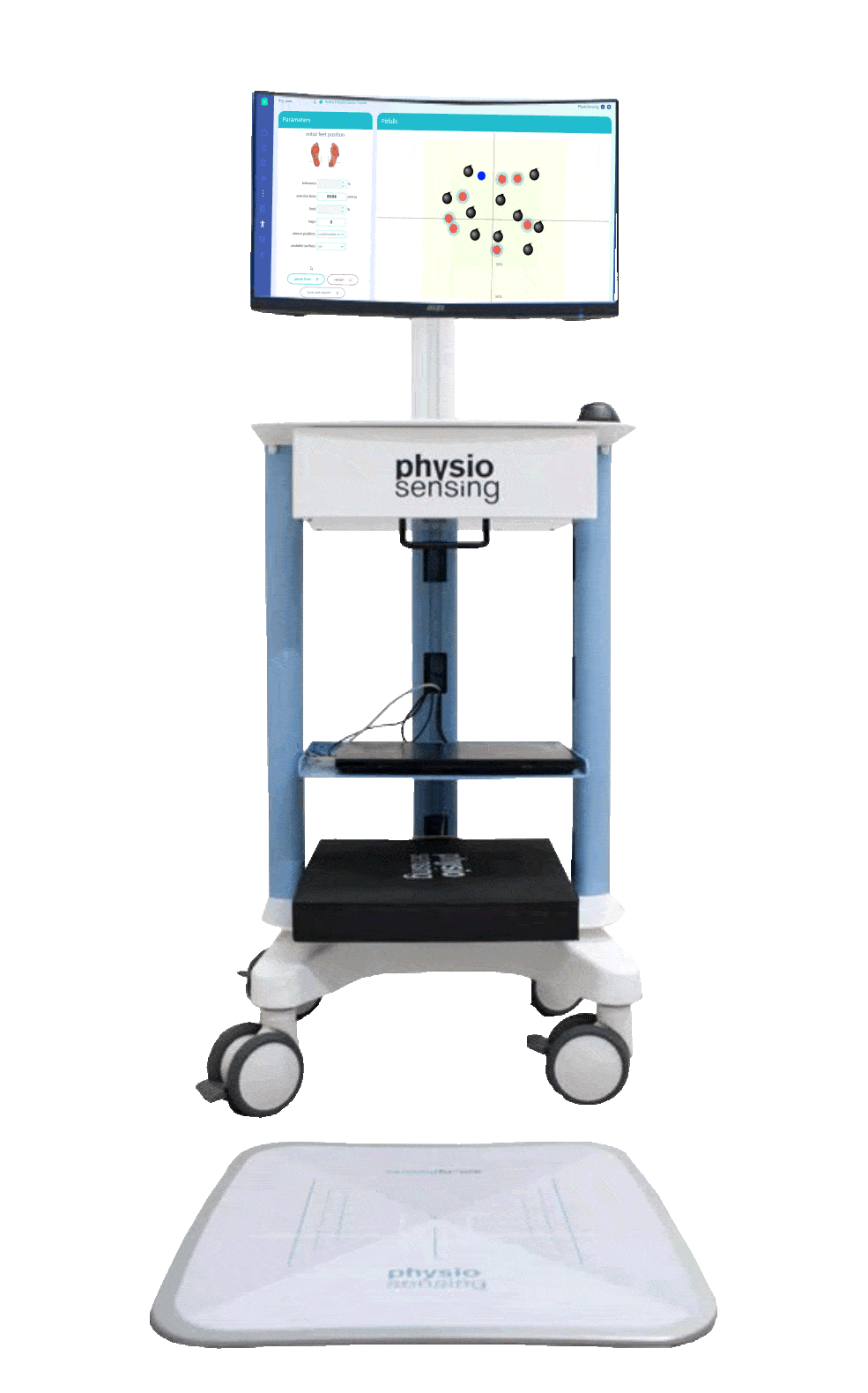
Posturography
Station
Advanced Force Platform
for Balance & Vestibilar Rehabilitation
PhysioSensing Posturographic Station transforms balance assessment into a meaningful experience - combining scientific precision with interactive feedback to evaluate, train, and restore postural stability in patients with vestibular, neurological, or age-related balance disorders, empowering confident movement and measurable recovery.


CLINICAL APPLICATIONS
Vestibular Rehabilitation and Sensory Integration Reweighting
-
Restore equilibrium by retraining how the brain integrates visual, vestibular, and somatosensory input. Biofeedback speeds adaptation, reduces dizziness, and rebuilds confidence in movement and posture.
Neurological Recovery & Functional Tracking
-
Quantify postural control in patients with Parkinson’s disease, stroke, multiple sclerosis, or traumatic brain injury. Monitor recovery, document neuroplastic changes, and personalize therapy with measurable data
that reveal true functional progress.
Fall Risk Detection
& Prevention
-
Identify instability before it leads to a fall. Advanced force-plate metrics (sway area, velocity, and trajectory), objectively quantify balance deficits and guide early, preventive interventions.
Limits of Stability (LOS)
& Motor Control Training
-
Assess and expand each patient’s safe range of motion using real-time visual feedback. Train automatic postural responses, strengthen control
strategies, and restorethe ability to move with confidence.

Comprehensive Sensory Organization
& Evidence Based Outcome Monitoring
-
Evaluate the contribution of sensory systems through mCTSIB and related tests. Generate reproducible, comparable reports to track improvement, demonstrate efficacy, and communicate measurable results to patients and referring clinicians.


WHY CHOOSE PHYSIOSENSING POSTUROGRAPHIC STATION?
Ultra-comprehensive body-sway analytics (30+ parameters)
Deep posturographic detail — over thirty CoP and sway measures to uncover subtle balance deficits others miss.
Objective, data-driven
postural assessment
Replace subjective impressions with precise quantification of balance, sway dynamics, and stability in every patient encounter.
Preloaded validated
clinical protocols
Comes with ready-to-use standard tests (LOS, mCTSIB, MCT, SOT) to streamline clinical workflow and guarantee reproducibility.
Extra sensitivity to early dysfunction
Detects subclinical vestibular or neurological impairments before they become overt, enabling earlier, more effective interventions.
Normative age - and condition -matched comparisons
Benchmark results against large reference datasets, enabling contextaware interpretation and clinical decision support.
Customizable for your
clinical needs
Adjust test durations, perturbation levels, direction weighting and tailor protocols to each patient’s condition and capacity.
Progress tracking & therapy effectiveness monitoring
Longitudinal reports visually compare sessions to quantify gains, validate treatment, and adapt protocols over time.
Intuitive real-time
visual feedback
Patients and clinicians see immediate sway maps or targets, enhancing engagement, motivation, and therapeutic adherence.
Strengthens clinical credibility
& differentiation
Offering advanced objective posturography sets your practice apart and inspires confidence among patients and colleagues.
Designed for balance, vestibular
& neuro specialists
Tailored interface, metrics, and workflows reflect the needs of physiotherapists, audiologists & ENTs, vestibular therapists, geriatric clinicians, and neurological rehab specialists.
Balance Assessment Protocols
-
mCTSIB (Modified Clinical Test of Sensory Interection on Balance)
The mCTSIB balance test evaluates vision, proprioception, and vestibular input in postural stability. Essential for detecting sensory integration deficits in rehabilitation.
-
Romberg Test
The Romberg balance test identifies neurological and vestibular deficits by comparing balance performance with eyes open and closed.
-
Body Sway (Posturography)
Comprehensive posturography that measures center of pressure movements under all possible condition combinations, delivering complete balance control analysis
-
LOS (Limits of Stability)
The Limits of Stability test measures dynamic balance control and fall risk by tracking how far patients can shift their center of gravity safely.
-
Fall Risk
Assesses fall risk by measuring sway velocity across standardized quiet-stance conditions (comfortable and narrow stance, eyes open/closed)
-
Rhythmic Weight Shift
Measures on-axis velocity and directional control as patients rhythmically shift their center of pressure in the AP/ML axes at slow, moderate, and fast.
-
Unilateral Stance
The Unilateral Stance test assesses single-leg balance and postural control, supporting fall prevention and neurological rehabilitation programs.
-
BESS (Balance Error Scoring System)
Quantifies postural errors in three stances (double-leg, single-leg, tandem) on firm and foam surfaces with eyes closed; widely used in concussion management and sports medicine.




Exercises Categories
-
Balance and Stability
-
Figure and Paths
-
Random Points
-
Visual Stimulus
-
Protocol Training
-
Load Charts
Balance Games Categories

BART

2D Game

Slime Pong

Slime Run

Space Sway

Break Your Balance

Get a Quotation
Get started now! Please fill out the form to start the conversation.
After submission, we'll email you.
Don't forget to check your spam/junk folder.